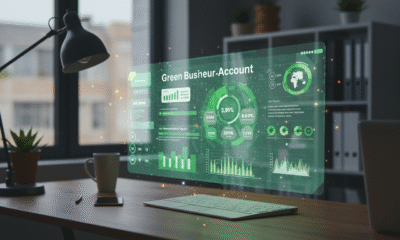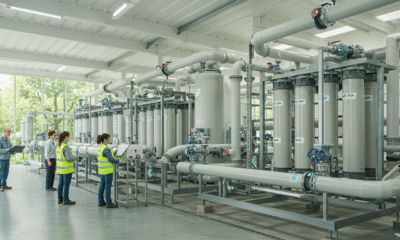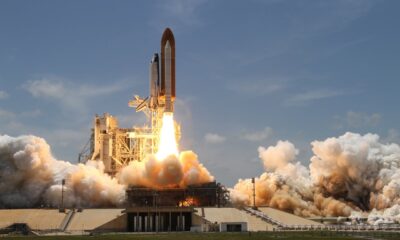
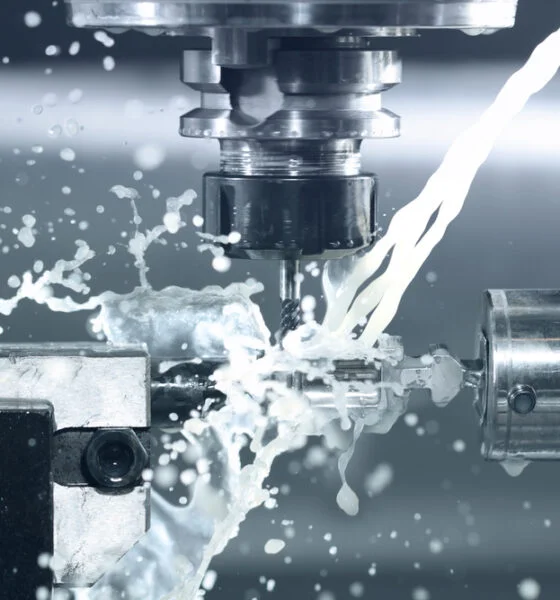
Environment
Water Jet Cutting’s Role in Eco-Friendly Manufacturing
In the conscientious landscape of modern manufacturing, the fusion of innovative technology with sustainable practices is not just a trend but an imperative. Water jet cutting emerges as a beacon of this synergy, marrying precision engineering with ecological responsibility. This cutting-edge technology is increasingly pivotal in sustainable manufacturing, offering a path to intricate design capabilities while ensuring a minimal environmental footprint.
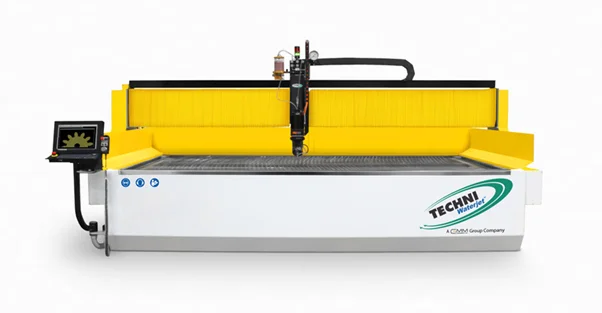
What Is Water Jet Cutting?
Imagine a tool so versatile that it can slice through the complexities of modern materials with water as its blade. Water jet cutting is precisely that—a sophisticated process where high-velocity water is focused into a beam, potent enough to cut through a plethora of materials. This method employs the force of water, sometimes mixed with abrasive particles, propelling it through a small nozzle at pressures that can exceed 50,000 pounds per square inch (PSI).
The Core Components of Water Jet Cutting Machines
A water jet cutter’s anatomy is both intricate and ingenious, comprising:
- A high-pressure pump
- A cutting nozzle
- An abrasive feeding system
- A CNC (Computer Numerical Control) system
- A catcher tank
Each component plays a pivotal role in transforming ordinary water into a precise cutting instrument.
The Science Behind Water Jet Cutting
At its heart, water jet cutting is a dance of physics and material science—where velocity and pressure converge, water transforms into a cutting entity, capable of dissecting materials with exactitude.
Why Is Water Jet Cutting Considered Eco-Friendly?
This technology stands out in the manufacturing sector for its minimal ecological disruption. Water jet cutting is a cold-cutting process, meaning it does not create heat-affected zones (HAZ) or thermal distortions, preserving the integrity of the materials and avoiding the emissions associated with high-temperature processes.
How Does Water Jet Cutting Minimize Waste?
Water jet cutting is astoundingly precise, which translates to:
- Reduced material wastage
- Optimal use of raw materials
- The ability to cut from recycled or raw materials
Does Water Jet Cutting Use Harmful Chemicals?
Unlike certain manufacturing processes, water jet cutting does not rely on hazardous chemicals, reducing the potential for environmental contamination and worker exposure to toxins.
What Are the Advantages of Water Jet Cutting in Manufacturing?
The benefits of water jet cutting in manufacturing are diverse and significant, including its versatility and precision. It does not compromise the material’s intrinsic properties, allowing for a cleaner cut and the ability to process materials unsuitable for other forms of cutting.
How Precise Is Water Jet Cutting?
Water jet cutting boasts impressive tolerances, often operating within a precision range of ±0.005 inches, which is essential for intricate designs and tight specifications.
Can Water Jet Cutting Handle Complex Shapes?
The adaptability of water jet cutting to intricate and complex shapes is unparalleled, due in part to the CNC technology that guides the cutting process with extreme precision.
What Materials Can Be Cut with Water Jet Technology?
The spectrum of materials amenable to water jet cutting is broad, including but not limited to:
Metals: From steel to titanium, accommodating varying thicknesses.
Composites: Able to cut without delamination.
Glass: Precise cuts without cracks or breaks.
Ceramics: Clean cuts preserving the material’s integrity.
Stone: From granite to marble, water jet cutting leaves a smooth edge.
How Does Water Jet Cutting Support the Principles of Sustainable Manufacturing?
The principles of sustainable manufacturing find a strong ally in water jet cutting. It’s a process that aligns with the ethos of sustainability, conserving resources, and minimizing environmental impact.
Does Water Jet Cutting Save Energy?
Comparatively, water jet cutting is less energy-intensive than laser or plasma cutting, often resulting in lower power consumption for the same tasks.
How Does Water Jet Cutting Reduce Carbon Footprint?
By eliminating the need for thermal processes, water jet cutting reduces energy use and thus, carbon emissions, supporting a greener manufacturing process. This is one of the many ways that companies are turning to eco-friendlier business practices.
What Are the Economic Benefits of Water Jet Cutting for Sustainable Manufacturing?
The economic incentives of water jet cutting are tied to its efficiency and precision, leading to cost savings in material usage and energy consumption.
Is Water Jet Cutting Cost-Effective?
When compared with other cutting technologies, water jet cutting often emerges as the more cost-effective option, particularly when considering the lack of secondary processing required due to its precision.
What Is the Longevity of Water Jet Machines?
Water jet machines are designed for longevity, with maintenance focused on preserving their precision capabilities, which can lead to extended service life and reduced turnover of machinery.
The Role of Water Jet Cutting in Different Industries
The versatility of water jet cutting has made it a sought-after technology across various sectors, each benefiting from its precision and environmental advantages.
In the aerospace sector, where precision and material integrity are non-negotiable, water jet cutting is invaluable.
The automotive industry utilizes water jet cutting for components requiring exact specifications and high-quality finishes.
In construction, water jet cutting allows for intricate design work in a variety of materials, from metal fixtures to stone inlays.
The energy industry, particularly in renewables, finds water jet cutting essential for fabricating durable components with high precision.
Water jet cutting has also found its place in art and design, providing artists and designers the ability to create complex shapes out of hard materials.
Best Practices for Water Jet Cutting

Optimizing water jet cutting for sustainability requires adherence to best practices, such as:
- Proper material preparation
- Efficient design
- Maintenance of equipment
How to Prepare Materials for Water Jet Cutting?
Preparation is key, and materials should be handled with the following steps:
- Ensure clean, dry surfaces
- Align materials properly to optimize cuts
- Select appropriate abrasives for the material
What Are the Safety Considerations in Water Jet Cutting?
Safety is paramount, and operators should follow protocols including:
- Proper training on machinery
- Use of protective equipment
- Adherence to maintenance schedules
Design Tips for Efficient Water Jet Cutting
Efficiency in design can be achieved by:
- Minimizing material use without sacrificing structural integrity
- Nesting patterns to reduce waste
- Designing with the cutting path in mind to reduce time
Comparing Water Jet Cutting to Other Cutting Technologies
When weighing water jet cutting against other technologies, consider factors like the precision, material limitations, and environmental impact. Water jet cutting often provides a more versatile and sustainable option.
Laser Cutting vs. Water Jet Cutting
Laser cutting technology is fast and precise but limited by its thermal process, which can affect material properties.
Plasma Cutting vs. Water Jet Cutting
Plasma cutting is efficient for metals but can create a HAZ, something water jet cutting avoids.
Mechanical Cutting vs. Water Jet Cutting
Mechanical cutting methods are traditional but can be less precise and more wasteful than water jet cutting.
Future Trends in Water Jet Cutting and Sustainability
Advancements in water jet cutting technology continue to push the boundaries of what’s possible, promising even greater efficiency and sustainability.
Conclusion
Water jet cutting stands as a testament to the potential of marrying innovation with environmental stewardship. Its role in sustainable manufacturing is not just advantageous but essential, setting a standard for how industries can operate with precision while respecting the planet.

